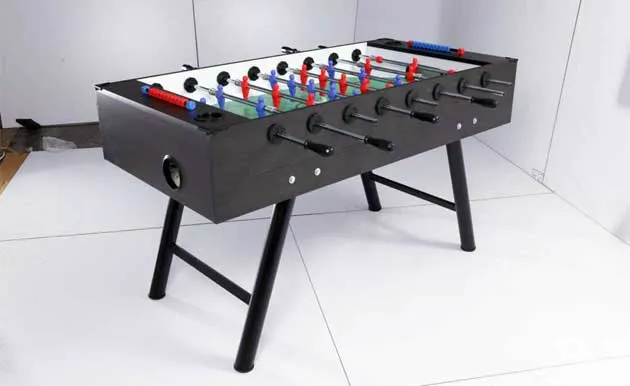Foosball Tables

Nobody is sure who developed it. The origins of foosball are a bit murky. Some sources believe that it started as a parlour game in the 1880s or 1890s, possibly in different parts of Europe at the same time.
The only thing we can say for sure is that Englishman Harold Searles Thornton has the earliest-known patent from 1923, which looks and functions just like the game we know today. Now, these tables are not only available in other countries, but also played in small places like Punjab, Jalandhar, Chandigarh, Maharashtra, Gujarat, Haryana, and Pan India.
For a normal beginner player, a foosball table is a foosball table. But, to a “fooser,” there are four distinct styles, which shows different styles of play.
For example, American style foosball, also known as “Texas foosball,” is usually played on a thick, solid table surface like mahogany, the ball is mostly thick plastic, and the foosball are made of harder plastic, all of which makes for a fast game where power rules. In addition, American tables have three men on the goalie bar as opposed to one goalie in other countries, enabling the player to pull the ball out of the corner without stopping gameplay.
German tables are the softest of the bunch, providing ultimate control of the ball to tactically line up shots on over-sized goals.
French foosball is played on a linoleum surface with a “gummy” feel and a cork ball, making the gameplay much more controlled, with an importance on passing the ball and setting up pass shots, just like real football.
Italian tables are a blend of styles, well known for using either sandblasted glass to allow for faster gameplay, or plastic laminate to slow things down for precision ball handling.

